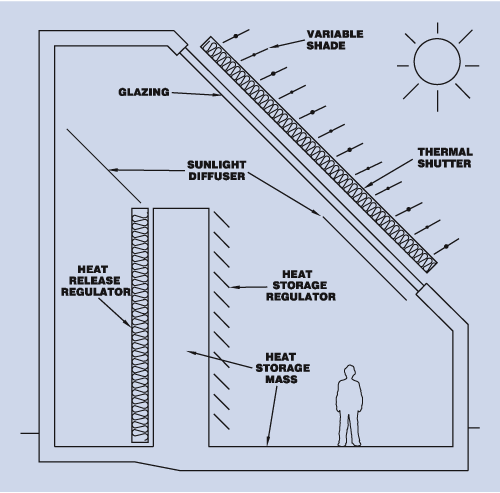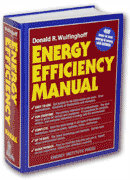Overview of…
Section 11: REFERENCE NOTES
The Reference Notes are one of the most powerful features of the Energy Efficiency Manual. They are self-contained explanations of individual energy topics. They can be used in different ways, depending on your needs.
The Reference Notes are written to be clear to anyone who has a general interest in energy efficiency. If you want to browse, you can read them in any order that you find interesting. The shorter Reference Notes give you concise, simple explanations of individual efficiency concepts that you cannot find in literature that is written for specialists. The longer Reference Notes will provide you with information that is clearer, more complete, and better balanced than you will be able to find in professional literature or equipment manuals.
The Reference Notes support the energy conservation Measures, which are organized in the first ten Sections of the Energy Efficiency Manual. An individual Measure may refer you to relevant Reference Notes for additional information. Here you will find additional in-depth information about equipment, principles of operation, design issues, construction practices, operating procedures, calculation tools, and energy sources. Most of the Reference Notes support a number of Measures. Keeping this information separate from the Measures avoids repetition and keeps the Measures as concise as possible.
If you are using the Energy Efficiency Manual as a textbook, the Reference Notes are the place to start. They are arranged in Groups. For formal study, start with any Group that is appropriate for your study plans, and read all the Notes in that Group. This approach applies to anyone who is serious about learning energy efficiency, including students, architects, engineers, environmental advocates, government energy officials, and others.
Group 1 introduces you to some to the most important tools of energy conservation, including devices for measuring the efficiency of systems, test equipment that helps you find energy waste in existing facilities, and calculation tools for architects and engineers.
Group 2 gives you a quick start in understanding energy sources, both conventional fossil fuels and electricity and “free energy” and “renewable energy” sources.
Group 3 explains the operation of the most important types of mechanical energy systems, including boilers, different types of cooling machines, refrigerants, pumps, variable-speed motors and drives, and the basics of thermostatic controls.
Group 4 explains how the building structure affects energy consumption. In short topics, you will learn about building air leakage, insulation, vapor barriers, daylighting, and passive solar heating.
Group 5 gives you a thorough background about lighting energy efficiency. You will learn how illumination should be measured, the lighting factors that are essential for good visual quality, a detailed comparison of all the common types of light sources, lighting efficiency standards, explanations of how all the major types of lighting work, and how to measure the light distribution patterns of installed light fixtures.
Click here to return to the Table of Contents


